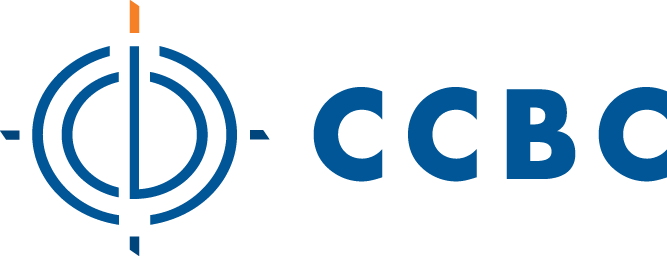5.14 Learning Activities
Open Resources for Nursing (Open RN)
Learning Activities
Chest Pain Case Study (Case Study answers are located in the Answer Key at the end of the book.)[1]
Mrs. Fatima Khan is a 58-year-old female who presents to the emergency department complaining of severe chest pain that started approximately 30 minutes ago. She describes the pain as a crushing sensation located in the center of her chest, radiating to her left arm. She rates the pain as 9/10 on the pain scale and reports associated symptoms of diaphoresis, nausea, and shortness of breath. She has a medical history of hypertension, hyperlipidemia, and type 2 diabetes mellitus and no known allergies. Current medications include lisinopril 10 mg daily, metformin 1000 mg twice daily, and atorvastatin 40 mg daily.
Vital Signs: BP 180/100mmHg, HR 110 bpm, RR 24 bpm, O2 sat 92% on room air, Temperature 37.0 C (98.6 F).
Physical Examination: Client is diaphoretic with a S3 gallop, shallow respirations, and audible crackles bilaterally. Skin is cool, clammy, and pale.
Laboratory and Diagnostic Results:
-
- Troponin: Elevated (> 0.04 ng/mL)
- CK-MB: Elevated
- Blood Glucose: 220 mg/dL
- Total Cholesterol: 240 mg/dL
- ECG: ST-segment elevation in leads II, III, aVF, and V1-V6
- Echocardiogram: Left ventricular dysfunction with decreased ejection fraction (EF 30%)
Questions:
- What is the significance of elevated troponin levels in a client with suspected MI?
- How do elevated CK-MB levels contribute to the diagnosis of MI, and how do they differ from troponin levels in timing and specificity?
- Why is it important to monitor blood glucose levels in a client with acute MI, and what impact can elevated levels have on the client’s prognosis?
- Describe the role of total cholesterol levels in the assessment of cardiovascular risk and their relevance in the management of MI.
“Cardiology Glossary Cards” by Open RN is licensed under CC BY-NC 4.0
“Cardiology Question Set 1” by Open RN is licensed under CC BY-NC 4.0
“Cardiology Question Set 2” by Open RN is licensed under CC BY-NC 4.0
![]()
Test your knowledge on pediatric cardiovascular conditions using this NCLEX Next Generation-style bowtie question. You may reset and resubmit your answers to this question an unlimited number of times.[3]
![]()
Test your knowledge on heart failure using this NCLEX Next Generation-style multiple response question. You may reset and resubmit your answers to this question an unlimited number of times.[4]
![]()
Test your knowledge on heart failure using this NCLEX Next Generation-style case study. You may reset and resubmit your answers to this question an unlimited number of times.[5]
![]()
Test your knowledge using this NCLEX Next Generation-style question. You may reset and resubmit your answers to this question an unlimited number of times.[6]
![]()
Test your knowledge on peripheral arterial disease using this NCLEX Next Generation-style case study. You may reset and resubmit your answers to this question an unlimited number of times.[7]
![]()
Test your knowledge on venous insufficiency using this NCLEX Next Generation-style case study. You may reset and resubmit your answers to this question an unlimited number of times.[8]
![]()
Test your knowledge on myocardial infarction using this NCLEX Next Generation-style case study. You may reset and resubmit your answers to this question an unlimited number of times.[9]
Telehealth Scenarios
Telehealth is an innovative technology that can bridge the gap between health care professionals and clients, especially for clients who live in remote areas. Telehealth makes health care not only more accessible but can also provide continuity of care and prevent unnecessary hospitalizations. Nurses who provide telehealth services become digital communicators and educators, clinical expertise with empathy and effective online communication.
Practice using effective telehealth communication in the following three scenarios with an 80-year-old Hispanic male who has chronic heart failure and is self-managing his condition at home[10]
Alejandro Hernandez, Telehealth Visit 1: Post-hospitalization Follow-Up
Alejandro Hernandez, Telehealth Visit 2: Identifying Learning Needs
Alejandro Hernandez, Telehealth Visit 3: Evaluating Effectiveness of Health Teaching
Media Attributions
- Logo-3_1-Large
- “Chest Pain Case Study” by Open RN is licensed by CC BY-NC 4.0 ↵
- “Case Study: Peripheral Arterial Disease” by Open RN and Codaptive Labs is licensed under CC BY-NC 4.0 ↵
- “Pediatric Cardiovascular Bowtie" by Jennifer Hinz and OpenRN is licensed under CC BY-NC 4.0 ↵
- “Heart Failure Multiple Response" by Kellea Ewen and OpenRN is licensed under CC BY-NC 4.0 ↵
- “Heart Failure - Level 2” by Angela Landry for OpenRN is licensed under CC BY-NC 4.0 ↵
- “PAD” by Kellea Ewen for OpenRN is licensed under CC BY-NC 4.0 ↵
- “Peripheral Arterial Disease” by Carrie Abrahamson for OpenRN is licensed under CC BY-NC 4.0 ↵
- “Venous Insufficiency” by Carrie Abrahamson for OpenRN is licensed under CC BY-NC 4.0 ↵
- “Cardiac Case Study” by Travis Christman for OpenRN is licensed under CC BY-NC 4.0 ↵
- Telehealth Scenarios by Open RN and Codaptive Labs are licensed under CC BY-NC 4.0 ↵

